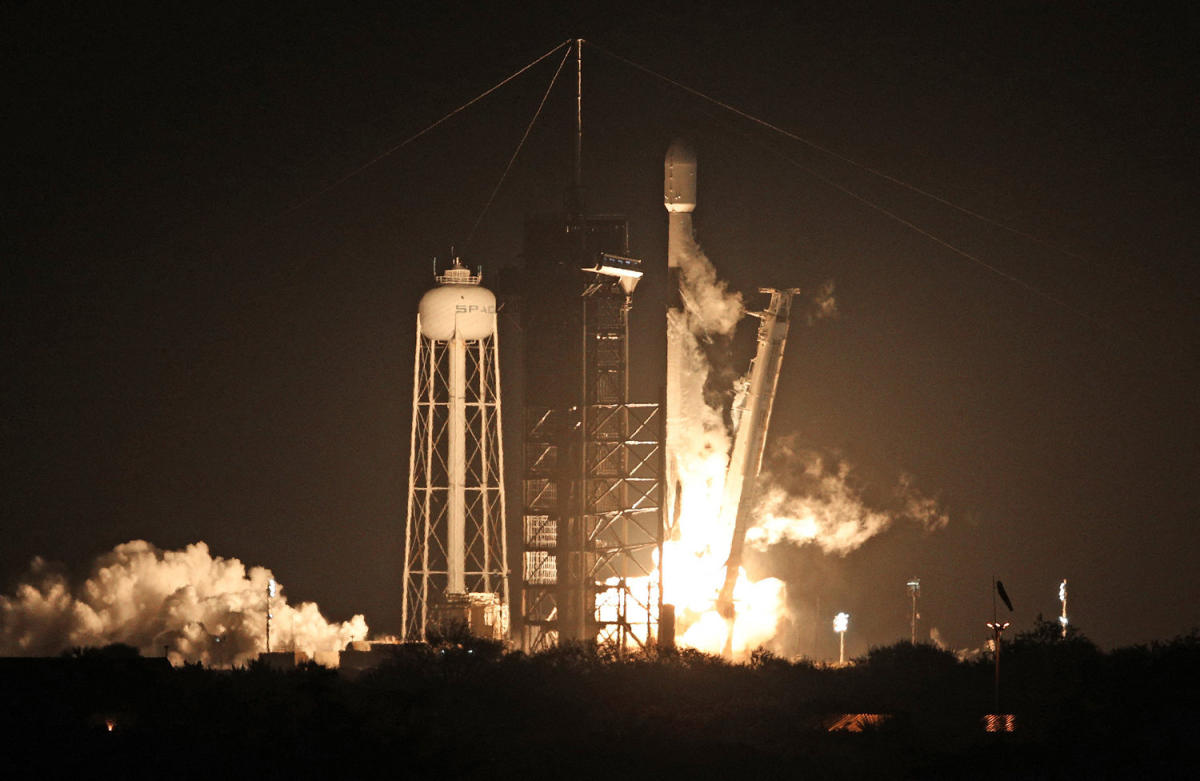In case you haven’t noticed, the bulls are firmly in control on Wall Street. Since the green flag waved at the start of 2023, the ageless Dow Jones Industrial Average, broad-based S&P 500, and growth-centric Nasdaq Composite have respectively rallied by 19%, 36%, and 56%, as well as hit fresh all-time highs.
While certain sectors and industries have played a role in pushing the broader market higher, the “Magnificent Seven” are attributed with putting the weight of Wall Street on their proverbial backs and lifting the stock market to new heights.
Wall Street’s view of the Magnificent Seven stocks is mixed
The Magnificent Seven represent seven of the largest and most-influential businesses in the country. Listed in descending order of market cap, the Magnificent Seven are:
Aside from each of these businesses handily outperforming the benchmark S&P 500 in the return column over the trailing decade, they provide well-defined competitive advantages, if not outright moats within their respective industries.
For example, Alphabet’s Google accounts for nearly 91% of worldwide internet search share, while Amazon’s e-commerce marketplace oversaw close to 38% of U.S. online retail sales in 2023. Amazon, Microsoft, and Alphabet are also the respective No.’s 1, 2, and 3 in cloud infrastructure service market share by enterprise spend.
Despite the clear-cut catalysts the Magnificent Seven stocks bring to the table, not all Wall Street analysts share an optimistic view for their future. Based on bottom of the barrel price targets issued by select Wall Street analysts, the following three Magnificent Seven components could plunge by up to 86%.
Meta Platforms: Implied downside of 24%
The first Magnificent Seven constituent that at least one analyst believes could meaningfully decline in the not-too-distant future is social media colossus Meta Platforms.
Earlier this month, BNP Paribas Exane analyst Stefan Slowinski, who often takes a contrarian view on some of Wall Street’s leading businesses, set a price target of just $360 on shares of Meta. This suggests 24% downside to come, based on the $476.20-per-share closing price, as of May 10.
According to Slowinski, Meta lacks new revenue streams, when compared to the other companies spending big on artificial intelligence (AI) solutions. This lack of new revenue channels, coupled with the company’s forecast of higher capital expenditures tied to AI, have Slowinski believing Meta could underperform.
On the other hand, Meta is the undisputed leader among social media platforms. It owns the top social media “real estate” globally, including the most-visited social site (Facebook), and lured 3.24 billion users to its family of apps on a daily basis during the quarter ended in March. Businesses understand they’re not going to reach a broader set of eyeballs on any other social media platform, which tends to afford Meta exceptionally strong ad pricing power.
Meta Platforms also benefits from lengthy periods of economic expansion. Since it generates close to 98% of its revenue from advertising, the company would be vulnerable to a recession. At the moment, a few key indicators, including a historic drop in U.S. M2 money supply, do suggest an economic downturn is probable.
However, recessions are short-lived. All 12 U.S. recessions since 1945 have endured between two and 18 months. Comparatively, most periods of growth last for multiple years, and occasionally even stick around for a decade. Ad-driven businesses thrive during these long-winded expansions.
A final reason Slowinski may be forced to eat his words is Meta’s balance sheet. The company closed out March with $58.1 billion in cash, cash equivalents, and marketable securities, and generated north of $19.2 billion in net cash from its operations through the first three months of 2024. In other words, it has the capital to take risks and aggressively invest in its future — even if the payoff from those investments are a few years away from being truly material to its top and bottom line.

Nvidia: Implied downside of 31%
The second Magnificent Seven member that one Wall Street analyst views as anything but “magnificent” is semiconductor behemoth Nvidia.
Based on a February note issued by analyst Gil Luria of D.A. Davidson, there’s concern about demand for Nvidia’s AI-accelerating graphics processing units (GPUs) peaking in the current year. With the prospect of slower growth on the horizon, Luria’s low-water price target of $620 implies a decline of 31% for Nvidia’s stock over the coming year.
On the bright side, Nvidia’s GPUs have come to dominate AI-accelerated data centers. With demand handily outpacing supply, strong pricing power helped to more than triple Data Center segment sales in fiscal 2024 (ended January 28).
But Luria hit the nail on the head when it comes to competition. While most folks might be focused on external competitors like Advanced Micro Devices and Intel, which are both rolling out AI-accelerators for enterprise data centers, it’s internal competition from Nvidia’s top customers that’s the far bigger concern.
Microsoft, Meta Platforms, Amazon, and Alphabet are Nvidia’s four-largest customers and comprise in the neighborhood of 40% of its net sales. But these four giants are all developing AI-GPUs of their own. Even if this is purely for complementary purposes, demand for Nvidia’s high-powered chips would likely wane after the current fiscal year.
What’s more, there hasn’t been a next-big-thing investment or innovation over the last three decades that didn’t navigate its way through a bubble-bursting event. Without fail, investors overestimate the uptake or adoption of new technologies. Since no company has benefited more from the rise of AI, Nvidia would, in theory, be hit the hardest if the AI bubble bursts.
Luria’s price target on Nvidia is likely to be reached.
Tesla: Implied downside of 86%
But the disaster du jour among Magnificent Seven stocks, based on the prognostication of one Wall Street pundit, is electric-vehicle (EV) maker Tesla. Gordon Johnson, the CEO and founder of GLJ Research and longtime Tesla bear, believes shares will reach $23.53.
This weirdly specific price target was arrived at by applying a multiple of 15 times Tesla’s earnings per share (EPS) in 2025 and working backwards using a 9% discount rate. Keep in mind this price target was issued earlier this year, and Tesla’s consensus EPS for 2025 has declined since then. If Johnson’s price target were to prove accurate, shares of Tesla would implode by 86% from where they closed on May 10.
Tesla has made a habit of proving skeptics wrong. For instance, it’s the only pure-play EV manufacturer that’s generating a recurring profit. Tesla recently introduced its fifth mass-production model (Cybertruck) and has the capacity to roll out more than 2 million EVs annually.
However, headwinds are most definitely mounting for North America’s leading EV company.
As an example, increasing EV and hybrid competition has coerced Tesla to slash the sales price of its primary production models (3, S, X, and Y) on more than a half-dozen occasions since the start of 2023. CEO Elon Musk has been clear that his company’s price strategy is entirely based on demand. But even with these aggressive cuts, Tesla’s inventory levels have soared and its operating margins are tumbling.
Tesla’s efforts to transform into more than just a car company haven’t gone swimmingly, either. Energy Generation and Storage sales growth has slowed dramatically, while Services segment gross margin is consistently in the low-to-mid single digits. Meanwhile, more than half of the company’s pre-tax income during the March-ended quarter came from unsustainable sources (e.g., interest income and the sale of regulatory tax credits).
The final nail in the coffin is that Musk has proved to be a tangible liability for the company. Many of Musk’s promises, such as Level 5 autonomy and robotaxis, which are already baked into Tesla’s valuation, have failed to come to fruition. The longer these claims go unfulfilled, the likelier it is that Tesla’s massive valuation premium to other auto stocks will deflate.
Should you invest $1,000 in Meta Platforms right now?
Before you buy stock in Meta Platforms, consider this:
The Motley Fool Stock Advisor analyst team just identified what they believe are the 10 best stocks for investors to buy now… and Meta Platforms wasn’t one of them. The 10 stocks that made the cut could produce monster returns in the coming years.
Consider when Nvidia made this list on April 15, 2005… if you invested $1,000 at the time of our recommendation, you’d have $553,880!*
Stock Advisor provides investors with an easy-to-follow blueprint for success, including guidance on building a portfolio, regular updates from analysts, and two new stock picks each month. The Stock Advisor service has more than quadrupled the return of S&P 500 since 2002*.
*Stock Advisor returns as of May 13, 2024
Randi Zuckerberg, a former director of market development and spokeswoman for Facebook and sister to Meta Platforms CEO Mark Zuckerberg, is a member of The Motley Fool’s board of directors. Suzanne Frey, an executive at Alphabet, is a member of The Motley Fool’s board of directors. John Mackey, former CEO of Whole Foods Market, an Amazon subsidiary, is a member of The Motley Fool’s board of directors. Sean Williams has positions in Alphabet, Amazon, Intel, and Meta Platforms. The Motley Fool has positions in and recommends Advanced Micro Devices, Alphabet, Amazon, Apple, Meta Platforms, Microsoft, Nvidia, and Tesla. The Motley Fool recommends Intel and recommends the following options: long January 2025 $45 calls on Intel, long January 2026 $395 calls on Microsoft, short January 2026 $405 calls on Microsoft, and short May 2024 $47 calls on Intel. The Motley Fool has a disclosure policy.
3 “Magnificent Seven” Stocks That Can Plunge Up to 86%, According to Select Wall Street Analysts was originally published by The Motley Fool
Signup bonus from




